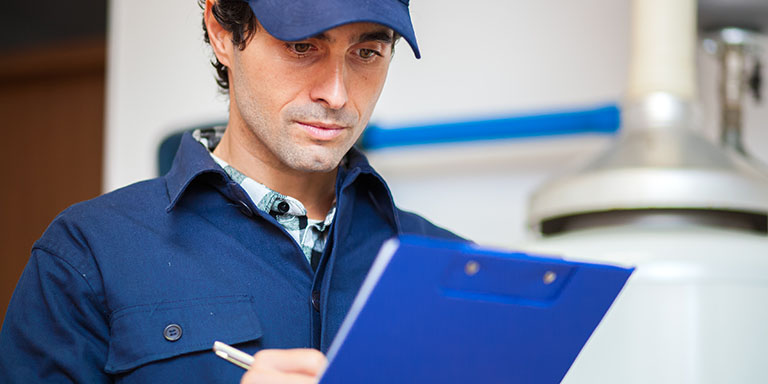When purchasing a home, plumbing is often overlooked, despite its crucial importance. Regrettably, many homeowners neglect to assess the condition of the plumbing system and later find themselves burdened with expensive repairs or replacements. It’s worth noting that various plumbing issues can exist in any home, some of which may not be readily apparent without thorough testing and inspections. Below, we have curated a convenient checklist of key considerations when purchasing a home.
Toilets
One commonly overlooked issue for homeowners is a leaky toilet base. While these leaks may seem insignificant at first, the water can gradually lead to rotting of the subfloor and even seep between the finished floor and subfloor. Unfortunately, some homeowners are unaware of the potential damage and try to fix the base themselves, inadvertently exacerbating the situation.
When inspecting toilets, the following issues can indicate potential problems:
- Warping or discoloration around the base of the toilet.
- Softness or movement in the floors near the base, especially when weight is applied.
- Rocking or sliding of the toilet bowl when grasped on either side.
If you observe any movement, it may indicate one of three possibilities:
- The seal is compromised.
- The flange is not fully secured.
- The toilet is not properly fastened to the flange.
Sewer
Speaking of toilets, there’s another important aspect to consider during your plumbing inspection: the sewer system.
Dealing with sewage-related problems can be both unpleasant and expensive, making it one of the last things you’d want to encounter after moving into a new house. When inspecting a potential home, be sure to inquire about its sewage system. If the property has a septic tank, gather information about its location, size, the routes of the connecting lines, and the most recent service date. Pay close attention to the surroundings of the tank and be on the lookout for any signs of seepage, such as foul odors or stagnant water.
It is advisable to conduct a thorough examination of the primary sewer drain, particularly for older homes. Over time, tree roots may cause blockages or the drain itself may deteriorate due to its age. Assessing the condition of the sewer drain, though challenging, is crucial. Engaging the services of a licensed plumber who can perform a camera inspection is highly recommended.
Keep in mind that sewer-related issues can lead to expensive repairs. If a skilled plumber identifies any of these problems before you finalize the purchase of a home, it’s advisable not to proceed with the sale unless the owner addresses the issues or provides a substantial reduction in their asking price.
Pipes
Plumbing pipes serve a crucial role, but homeowners often remain oblivious to pipe-related issues until significant damage has occurred, given their concealed placement behind walls and under foundations. Below, we highlight key aspects of the piping system that warrant inspection.
- Pipe size: Dealing with low water pressure is a common issue that many of us have encountered. It often stems from having pipes that are too small. To determine if a home has sufficient water pressure, you can examine the size of the water pipes and seek advice from a professional or conduct your own research. Ideally, the pipes leading to the house from the water source should be at least three-quarters of an inch, while the pipes leading to the faucets should measure at least half an inch. It is rare for sellers with undersized pipes to go through the trouble of replumbing their homes. However, inspecting the pipes will provide you with valuable information and enable you to consult a professional on how to address the situation effectively.
- Water pressure: Pressure is another indicator of potential pipe issues. If you have an older home built before 1980, it might have galvanized pipes that can cause headaches for homeowners. These pipes corrode faster than PVC pipes, with the hot water pipes often being the first to deteriorate. Therefore, it’s advisable to start by checking the hot water pressure. Low pressure could indicate corrosion or blockage in the pipes.
- Under the sink: Since hot water pipes are prone to failure, previous homeowners may have already experienced issues with their pipes. Take a look under the sinks to check if they have been replaced. When constructing a new house, contractors typically install plumbing pipes within the walls. However, when it comes to repairs and upgrades, accessing the pipes through the walls can be more expensive and time-consuming. Therefore, it is more common to go through the floors instead.
- Water meter: To determine if there is a leak in your home’s water system, you can rely on the water meter. When all water sources in the house are turned off, check the meter. Even the slightest movement of the dial suggests a potential leak. It’s important to note that leaks may not immediately cause visible stains on floors or walls. Some leaks can be subtle, only revealing themselves when a disastrous event like a falling bathtub occurs unexpectedly from an upstairs bathroom.
- Water color: In general, people prefer clear water, and any deviation from transparency is a clear indication of a problem. However, discolored water doesn’t always manifest as a dark brown sludge; sometimes it appears as a subtle shade of brown or yellow, which could be a potential sign of rusting pipes.
Expert Plumbers in Winston-Salem
If you’re in the market for a new home in the Winston-Salem area, it’s important to have a professional plumbing inspection before finalizing your purchase. At Bodenheimere Plumbing Services, our team of expert plumbers has years of experience providing top-notch plumbing services to homeowners throughout the region. From inspecting sewer systems and pipes to identifying potential issues and conducting necessary repairs, we are dedicated to ensuring that your new home’s plumbing system is in excellent condition. Contact us today to schedule your plumbing inspection and have peace of mind knowing that your new home is ready for you to move in.
Keep an eye out for part 2 of our guide on plumbing and home inspections, where we’ll discuss other important aspects to consider when inspecting a potential new home.


